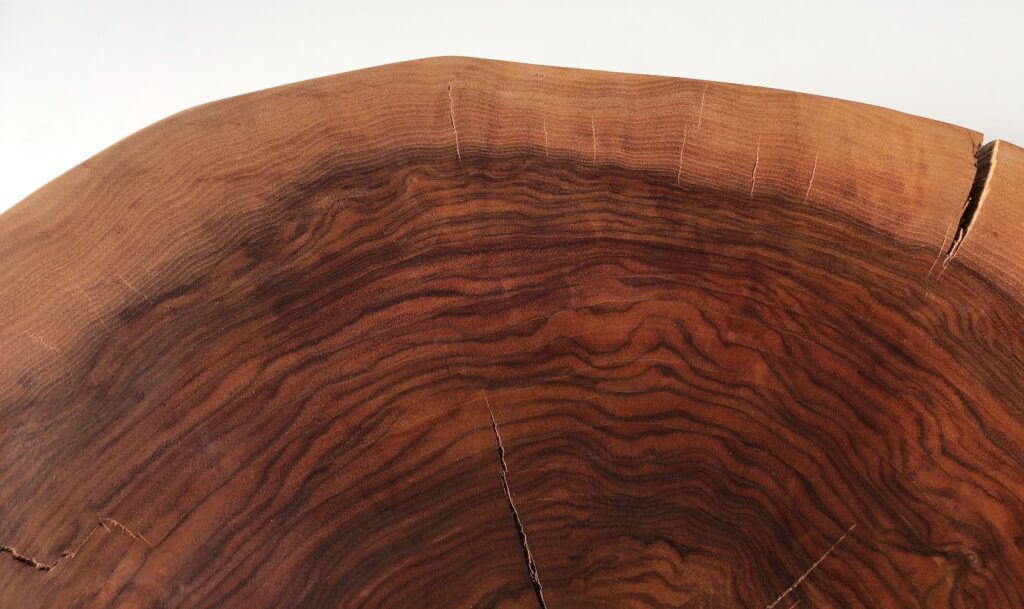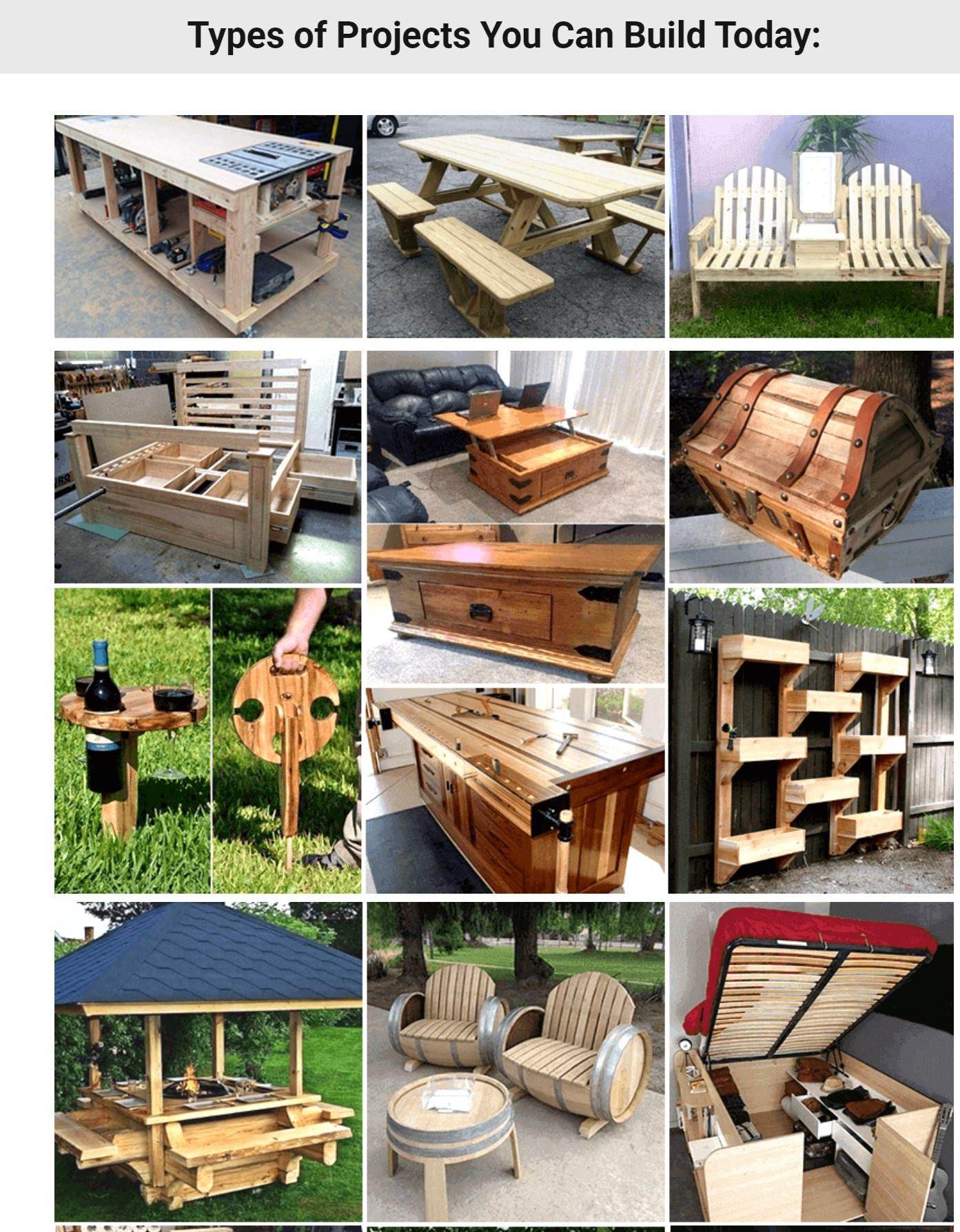Wood Anatomy
Table of Contents
- Introduction
- Wood Cell Structure
- Annual Growth Rings
- Density and Cell Wall Thickness
- Grain Patterns
- Strength and Workability
- Natural Durability and Treatability
- Conclusion
- Wood Anatomy FAQ
Introduction
Wood is an incredibly versatile and useful natural material that has been utilized by humans for thousands of years. The properties that make wood so valuable – its strength, workability, and aesthetic appeal – are direct results of its anatomical structure and composition at the cellular level. In this article, we will explore the cellular makeup of wood, how it grows, and how its anatomy impacts its physical characteristics and utility. If you are new to woodworking, you might find this guide on how to get into woodworking helpful.
Wood Cell Structure
Wood is composed of plant cells known as tracheids and vessels. Tracheids make up the majority of a tree’s xylem, which is the tissue that transports water and minerals from the roots to the leaves. Vessels are larger tube-like cells that are stacked end to end to create long channels for fluid transport. The cell walls of tracheids and vessels are rigid and reinforced with lignin, a complex polymer that gives wood its strength and hardness. Tracheids and vessels are oriented along the trunk and branches, which enables efficient water transport.
In softwoods (gymnosperms like pine, fir and cedar), tracheids make up over 90% of the xylem. Hardwoods (angiosperms like oak, maple and mahogany) have a more diverse cell structure, with roughly equal proportions of tracheids and vessels. This anatomical difference makes hardwoods generally denser, as the vessel elements have thicker cell walls.
In addition to tracheids and vessels, wood contains fibers – long, narrow cells that provide structural support and stiffness. Parenchyma cells store nutrients and metabolites. Rays run perpendicular to the grain and transport nutrients horizontally between the xylem and outer bark layers.
Annual Growth Rings
The vascular cambium is a cylinder of meristem cells that divide and produce new xylem (tracheids/vessels) to the inside, and new phloem (sugars and nutrients) to the outside. This radial growth results in distinctive growth rings that can be seen on the cross-section of a tree trunk or branch.
In temperate climates, trees form one new growth ring per year. In spring, larger cells with thinner walls are produced, known as earlywood or springwood. These allow for rapid water transport when water is abundant. In summer, smaller, thicker-walled latewood cells are formed, which provide more structural support. The contrast between earlywood and latewood makes the annual growth rings clearly visible.
In tropical regions, growth rings may not be discernible because trees grow continuously year-round. The age of tropical trees can sometimes be estimated by isotope analysis or through growth ring counts of trees with seasonal cambium dormancy.
Density and Cell Wall Thickness
The density of wood is determined by the thickness of the cell walls and the size of the cells or cell cavities. Woods with thick cell walls and small cell cavities, like oak and maple, are dense and hard. Woods with thin cell walls and large cavities, like cedar and balsa, are low density and soft.
As trees age, successive growth rings have smaller cells and thicker cell walls. The outermost heartwood is the oldest, strongest and densest part of the tree. Younger sapwood nearer the bark has thinner-walled cells and serves in water transport. Density combined with growth ring anatomy contributes to the unique workability, strength and aesthetic qualities of different wood types.
Grain Patterns
The patterns visible on the surface of wood are known as grain. Grain results from the orientation of fibers and vessel elements in the xylem. The longitudinal axes of the cells are oriented parallel to the trunk or branch, producing a grain that is straight or spiral along the length of the wood.
In plainsawn or flatsawn wood, the growth rings run predominantly perpendicular to the wide face. This results in arched grain lines following the contours of the rings. In quartersawn wood, the growth rings run predominantly parallel to the wide face, producing straight grain lines. Quartersawn lumber is valued for its dimensional stability and aesthetic appearance.
Grain patterns like wavy, curly and fiddleback figure result from abnormal growth stresses. Interlocked and burl grain are formed by anomalous buds. Knots occur where dormant side branches produce intergrown grain. These distinctive grain patterns are part of the natural beauty and appeal of wood. Understanding these patterns is essential for creating beautiful DIY wood decor.
Strength and Workability
The cellular structure and anatomy of wood has a direct impact on its mechanical properties and workability.
Density is proportional to strength – dense hardwoods like oak can withstand much higher stresses than low density softwoods like pine. Dense woods also resist indentation and wear.
The orientation of grain lines to the forces applied significantly affects strength. Grain aligned parallel to applied forces provides greater stiffness and ability to span distances without bending.
Hardness depends on density and cell wall thickness. Thick-walled latewood tracheids make cutting across the grain difficult in some wood types.
Shrinkage, warping, and twisting during drying are minimized when grain lines run straight and parallel rather than irregular. Quartersawn boards resist cupping and checking better than plainsawn boards.
Workability is also related to anatomical factors like silica content in grasses and trees, which quickly dulls cutting edges. Interlocked grain and knots also negatively impact ease of cutting and finishing. For more tips on woodworking, check out this guide on beginner woodworking tips and tricks.
Natural Durability and Treatability
Some woods have natural biocidal extracts like tannins, oils, and resins in their heartwood that makes them resistant to rot and insects. These include teak, cedar, and cypress. Conversely, the sapwood of all trees has little natural durability.
Permeability of tracheids and vessels affects how readily wood accepts preservative treatments. Pine is treated easily because of its open cell structure. Dense oak is more difficult to treat effectively. Quantifying vessel size and proportion is helpful in assessing wood treatability.
Conclusion
Wood anatomy examines the cellular and morphological factors that determine a wood species’ unique properties. Understanding growth rate, density, grain orientation, permeability, and cellular composition provides insights into the performance, workability, and variability of this amazing natural building material. Continuing research aims to further explain the structure-property relationships of wood and improve utilization of this renewable resource.
Wood Anatomy FAQ
Q: What are the main components of wood?
A: The main components of wood are tracheids, vessels, fibers, parenchyma cells, and rays. Tracheids and vessels transport water and nutrients. Fibers provide structural support. Parenchyma cells store nutrients. Rays transport nutrients horizontally between the bark and interior xylem.
Q: What is the difference between hardwoods and softwoods?
A: Hardwoods have a more diverse cell structure with roughly equal proportions of tracheids and vessels. This makes them denser. Softwoods have over 90% tracheids and are less dense.
Q: How does wood grow radially?
A: The vascular cambium adds new xylem cells inward and new phloem cells outward each year. This radial growth results in annual growth rings seen as circular patterns on tree trunk cross sections.
Q: What causes the earlywood and latewood zones within growth rings?
A: In spring, larger thin-walled cells form earlywood for rapid water transport. In summer, smaller thicker-walled cells form latewood for structural support. This contrast makes growth rings clearly visible.
Q: How do seasonal changes affect wood density?
A: Latewood has smaller, thicker-walled cells so it is denser than earlywood. As a tree ages, successive growth rings have smaller cells and thicker walls, making the outer heartwood the strongest and densest.
Q: What is quartersawn versus plainsawn wood?
A: Quartersawn wood has growth ring orientation predominantly parallel to the wide face. Plainsawn has rings perpendicular, resulting in less dimensional stability.
Q: How does grain orientation affect wood strength?
A: Grain aligned with the axis of applied force provides greater stiffness and load-bearing capacity. Irregular grain and interlocked fibers reduce strength.
Q: Why is wood workability related to anatomy?
A: Density, cell wall thickness, silica content, and irregular grain like knots affect cutting, finishing and smoothness of the wood surface.
Q: What anatomical features affect natural durability?
A: Heartwood decay resistance depends on extractives like tannins, oils, and resins. Sapwood generally has little natural durability.
Q: How does anatomy influence wood treatability?
A: Tracheid/vessel size and proportion affect permeability to preservative treatments. Open cell softwoods like pine treat more easily than dense hardwoods.
Q: How can wood anatomy improve utilization and sustainability?
A: Analyzing cellular factors helps match species to appropriate structural or aesthetic uses. Ongoing research aims to further explain structure-property relationships.




